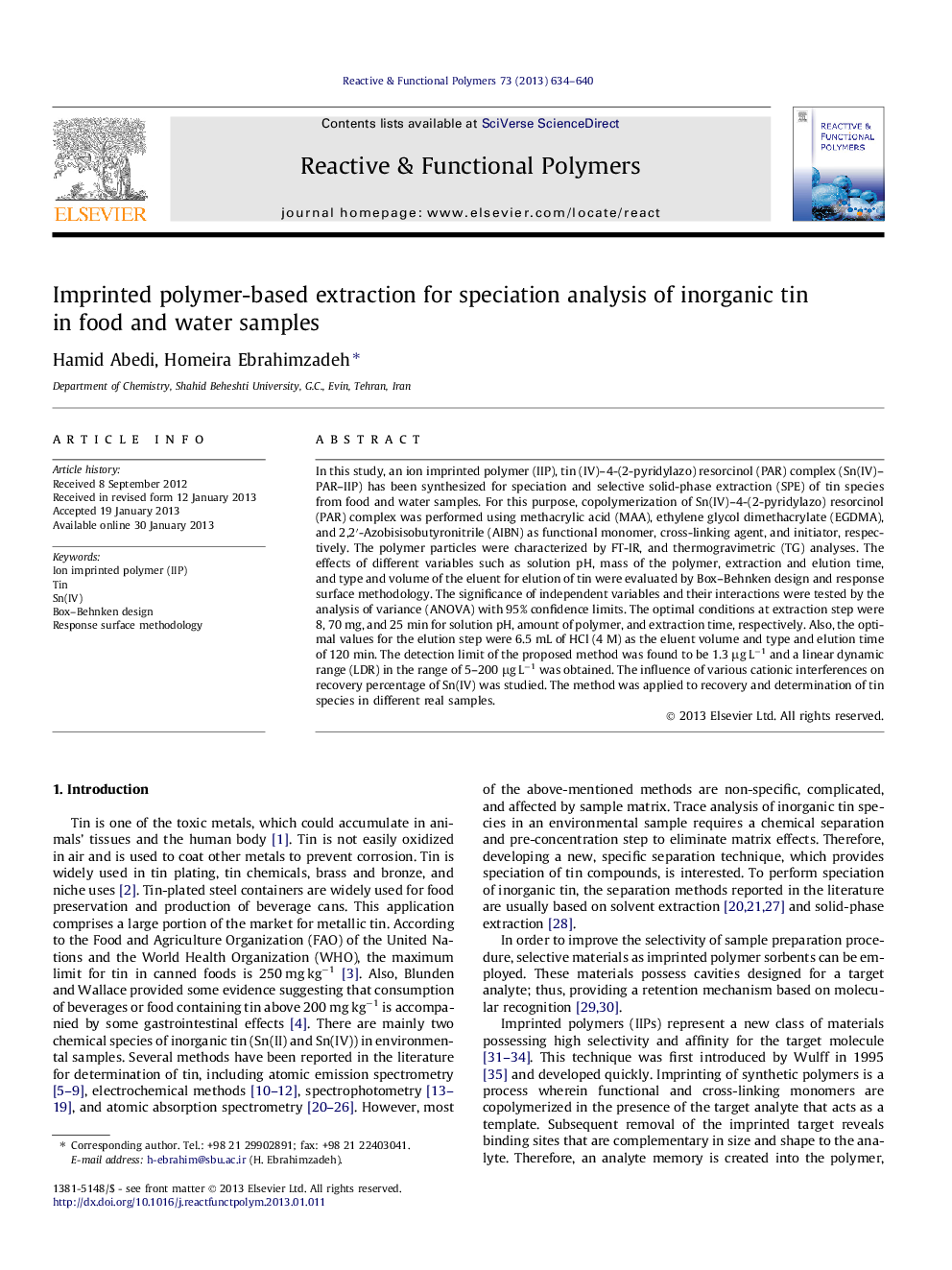| Article ID | Journal | Published Year | Pages | File Type |
|---|---|---|---|---|
| 5210168 | Reactive and Functional Polymers | 2013 | 7 Pages |
Abstract
In this study, an ion imprinted polymer (IIP), tin (IV)-4-(2-pyridylazo) resorcinol (PAR) complex (Sn(IV)-PAR-IIP) has been synthesized for speciation and selective solid-phase extraction (SPE) of tin species from food and water samples. For this purpose, copolymerization of Sn(IV)-4-(2-pyridylazo) resorcinol (PAR) complex was performed using methacrylic acid (MAA), ethylene glycol dimethacrylate (EGDMA), and 2,2â²-Azobisisobutyronitrile (AIBN) as functional monomer, cross-linking agent, and initiator, respectively. The polymer particles were characterized by FT-IR, and thermogravimetric (TG) analyses. The effects of different variables such as solution pH, mass of the polymer, extraction and elution time, and type and volume of the eluent for elution of tin were evaluated by Box-Behnken design and response surface methodology. The significance of independent variables and their interactions were tested by the analysis of variance (ANOVA) with 95% confidence limits. The optimal conditions at extraction step were 8, 70 mg, and 25 min for solution pH, amount of polymer, and extraction time, respectively. Also, the optimal values for the elution step were 6.5 mL of HCl (4 M) as the eluent volume and type and elution time of 120 min. The detection limit of the proposed method was found to be 1.3 μg Lâ1 and a linear dynamic range (LDR) in the range of 5-200 μg Lâ1 was obtained. The influence of various cationic interferences on recovery percentage of Sn(IV) was studied. The method was applied to recovery and determination of tin species in different real samples.
Related Topics
Physical Sciences and Engineering
Chemistry
Organic Chemistry
Authors
Hamid Abedi, Homeira Ebrahimzadeh,
